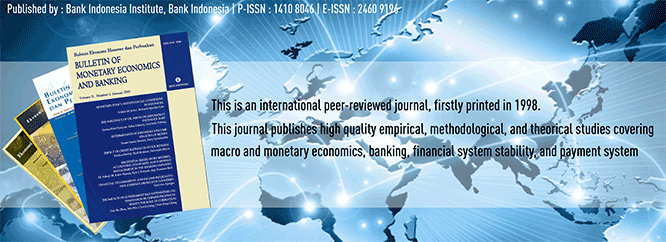
Document Type
Article
Abstract
This study explores interconnections between risk behaviour in the financial sector, particularly banking sector, with monetary policy stance. Referring Bernanke and Blinder (1988) modified model for analyzing the bank credit behavior, we develop an empirical model to test the role of risk behaviour in monetary policy transmission mechanism. Vector Error Correction Model are applied to test the significance of interaction between risk variables and monetary policy stance in the short run dynamics of credit behavior around its long-run cointegration with real GDP. Some empirical results emerge from this preliminary study. First, there is early indication that risk taking channel in the monetary policy transmission mechanism exists in Indonesia during analysis period. Second, risk variables and credit tend to move procyclicalyl while monetary policy stance tends to a-cyclical. Third, pro-cyclical behavior of credit and risk variables reverses the effect of loose monetary policy stance, and there is an indication of asymmetric effect between tight monetary policy and loose monetary policy in Indonesian economy. These empirical findings bring about policy recommencations for better understanding on the risk behavior in the banking sector, as well as integration beetween monetary dan financial sector policies.
Recommended Citation
Satria, Doni and M. Juhro, Solikin
(2011)
"PERILAKU RISIKO DALAM MEKANISME TRANSMISI KEBIJAKAN MONETER DI INDONESIA,"
Bulletin of Monetary Economics and Banking: Vol. 13:
No.
3, Article 9.
DOI: https://doi.org/10.21098/bemp.v13i3.262
Available at:
https://bulletin.bmeb-bi.org/bmeb/vol13/iss3/9
Creative Commons License

This work is licensed under a Creative Commons Attribution-NonCommercial 4.0 International License
Country
Indonesia
Affiliation
Universitas Andalas







